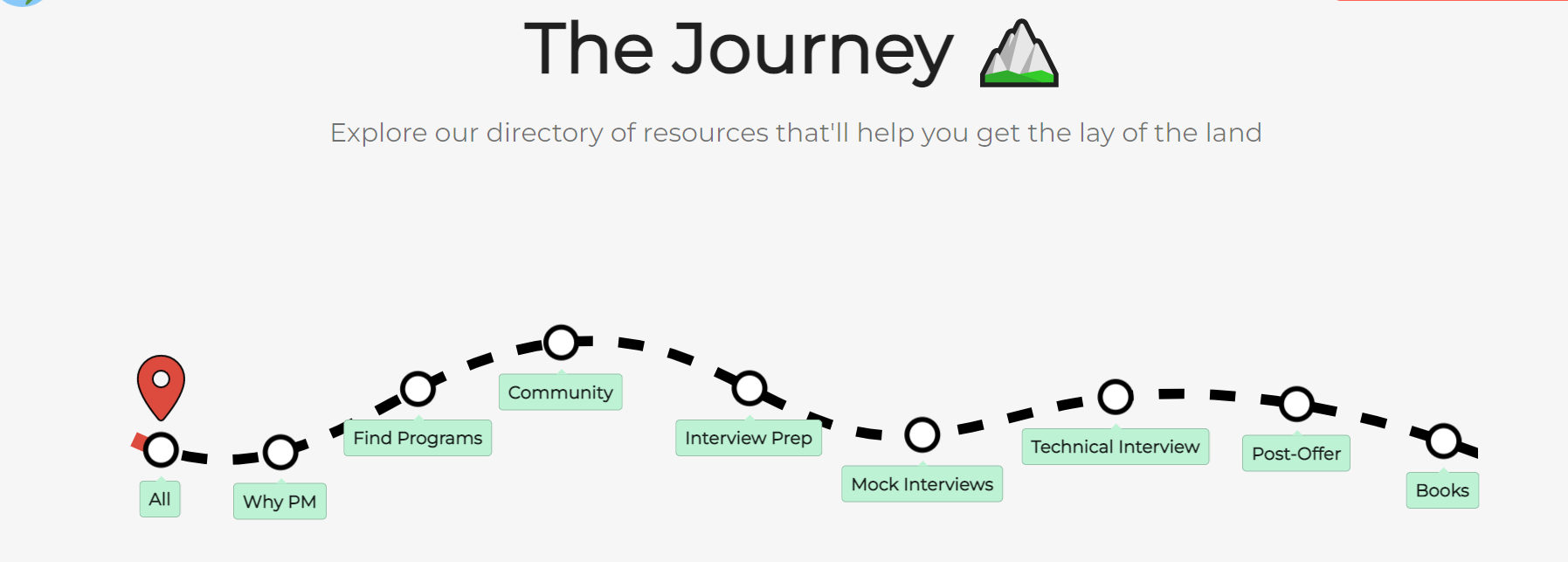
#Issue 017
View in BrowserBrought to you by

#Issue 017
Becoming a product manager
Greetings, ET readers 🖖🏾
Breaking into product management (PM) can feel daunting, with so many resources out there and too little information on where to begin. Should you learn to code or shouldn’t you? Would previous experience in customer success be useful in a PM role, or wouldn’t it?
This is a special edition of Entering Tech, and we’ve knocked on the doors of PM expert Karen Ginigeme for answers to these questions and more. I invite you to read on: Karen breaks down the PM journey into easy steps. Basically, if you’re breathing, you probably already possess one or two skills useful for a PM role!
Happy reading.

Tech Trivia Questions
Some trivia before we begin. Answers are at the bottom of this newsletter.
- How many Africans were affected by internet shutdowns in 2022?
- Which African country has the highest number of startups?

5 tips to break into product management in 2023
Product management can generally be a challenging career to break into, and since Karen Ginigeme began mentoring product management enthusiasts last year, the most frequent question she has been asked is “How exactly do I break into product management?”
In one of our previous #EnteringTech editions, we briefly highlighted product management.
In this edition, Karen Ginigeme, product lead at OneLiquidity, takes us through a five-step guide which will cover absolutely everything you need to know to get started—especially if you have no prior experience. Let’s begin.
Follow up by building up your background knowledge about product management. This APM Map is a good place to get started. It’s filled with lots of resources to help you navigate whatever stage you are in your PM journey. The “Why PM” location pointer focuses on helping you understand what product management is and if you should build a career in it.

Explore additional blogs, books, youtube, and podcasts to explore key terminology and concepts, such as the product life cycle, the product development process, and product roadmaps. By immersing yourself in the topics, you’ll begin to build a deeper understanding of what product management is all about—laying the foundation for more structured, formal learning.
With your skills gaps identified, take proactive steps to fill them. If you have an existing job, look for opportunities to develop these skills in your current role. This is especially useful for soft skills like communication and problem-solving, which you can apply and practise in almost any context. In addition to honing essential soft skills and picking up some product-specific knowledge, it is equally very important to formalise your learning with courses. These courses provide you with a step-by-step approach to general product management, expose you to challenges you may face and teach you how to overcome them. There are plenty of free courses available online, allowing you to dip your toe in and learn the basics before committing to a more comprehensive programme.
There are seven free product management courses at the bottom of this newsletter.

Thanks to various social media platforms, it is now easier to get noticed by thousands of people. Decide the most convenient way for you to share the things you’ve learned, problems you’ve identified in existing products and how you would like to improve them, or even the progress you’ve made in your product management journey. Would you rather talk about it? Write about it? Make videos? Or create illustrations? The method is completely up to you. Whatever you choose, take up this challenge and try selling yourself. In the face of fear, or if you feel like an imposter, ask yourself these two questions: “Do I really have anything to lose by doing this?” and “What do I stand to gain?”
Networking is especially important as it opens the door to new opportunities and is a great source of mentorship, advice, and industry insight. Expand your network and meet people who are in positions to recommend you for opportunities. The more people you’re building relationships with within the industry, the better.
Here are some ways to get started:
- Join some Slack communities such as Mind The Product, The Product Folks, The Product School, People in Product, Product Dive, Product Buds, GrowthHackers, and Women In Product.
- Join LinkedIn groups such as the Product Management Networking Group—154,000+ members strong.
- Search meetup.com for product management events and socials.

Alternatively, try out an internal transfer. If there’s an existing product management department, speak to your manager (and others from the product team) to discuss potential opportunities for an internal role change. This is a great way to get started in product management as you’ve already proven yourself in the company and are familiar with the product.
To have a one-on-one chat with Karen Ginigeme on breaking into product management or navigating your way in the product space, you can book a mentorship session with her on ADP List. You can also reach out to her on LinkedIn or email her at karenginigeme@gmail.com.
Partner Content

What do you do when you want to switch careers and don’t know how? Zikoko is bringing #ZikokoHuslePrint for the inside gist on starting a career.
Read HustlePrint here
You can be a PM too
If you’re interested in kicking off your career in product management, here’s a list of resources you might need.
- Price: Free
- Duration: 4 Wweeks
- Tools Needed: Internet + phone
- Level: Beginner
- Price: Free
- Duration: 14 hours
- Tools Needed: Internet + Phone
- Level: Beginner
- Price: Free
- Duration: 5 months
- Tools Needed: Internet + Phone
- Level: Beginner
- Price: Free
- Duration: 10 hours
- Tools Needed: Internet + Phone
- Level: Intermediate
- Price: Free
- Duration: 5 hours
- Tools Needed: Internet + phone or laptop
- Level: Beginner
- Price: Free
- Duration: 10 days
- Tools Needed: Internet + laptop
- Level: Beginner

Ask a techie
Q: As a graduate who wants to go into tech, I love communication, paying attention to detail and data entry. With these skills, which tech job suits me?
Short answer is: whichever one you choose, because we can’t choose for you. We can, however, give you a few pointers. If you love data entry, you should check out data annotation and machine learning, which is a fairly new field where you label data with specific tags and teach computers to recognise and classify these tags. We’ve written about a data annotator who was earning $600 per month. You should also check out data analysis and we wrote an edition on data analysis here.
Q: I want to learn SEO writing but each time I get to the learning space I always find myself questioning my decision. I already have a biochemistry degree and I keep wondering how or if I’ll thrive with SEO writing. Do you have any advice for me this year? How can I learn this in a fun way without the fear of what comes after?
A: We’ll start with a cheesy quote: everything you want is on the other side of fear. Fortunately, you’re going through something many techies have experienced. The best way to get through this would be to connect with other techies in a similar field, find communities and challenge yourself. By joining a community filled with SEO experts and writers, you’ll find new things about SEO and learning partners. It’s important that you go through this journey with someone—an accountability partner maybe—they’ll build your morale and stamina.
Have a question about working or breaking into tech? Ask here and we’ll respond in subsequent editions!

Tech Trivia Answers
- About 300 million Africans, according to Surfshark’s annual recap. Five countries shut down or throttled internet access over 18 times last year.
- It’s Nigeria with 3,300 registered startups as at 2020, the highest number of tech startups on the continent, 81% more than South Africa’s estimated 600.

Jobs
- ShiptoNaija – Product Owner– Lagos, Nigeria
- Microsoft – Product Manager – Nairobi, Kenya
- Gitlab – Product Design Manager – Lagos, Nigeria
- Canonical – Product Marketing Manager – Nairobi, Kenya
- Status – UI Designer (Web) – Kampala, Uganda
- Koko Networks – Product Designer – Lagos, Nigeria
- Canonical – Openstack Product Manager – Nairobi, Kenya
- Okra – Technical Product Manager – Lagos, Nigeria
- Koko Networks –Senior Product designer – Nairobi, Kenya
- KCB Group – Product Configuration Specialist – Nairobi, Kenya
- Fairmoney Nigeria – Senior Product Designer – Lagos, Nigeria
- Canonical – Product Manager, Public Cloud Ubuntu – Nairobi, Kenya
- Interswitch – Product Marketing Manager – Lagos, Nigeria
- Flutterwave – Product Manager, Send – Lagos, Nigeria
- Kuda Microfinance Bank – Product Marketer – Lagos, Nigeria
Disclaimer: TechCabal is not affiliated with or associated with jobs and opportunities listed on all its job boards and newsletters. All applicants bear the responsibility of researching about the roles and companies they apply to.

No longer want to receive these emails? Unsubscribe here

















